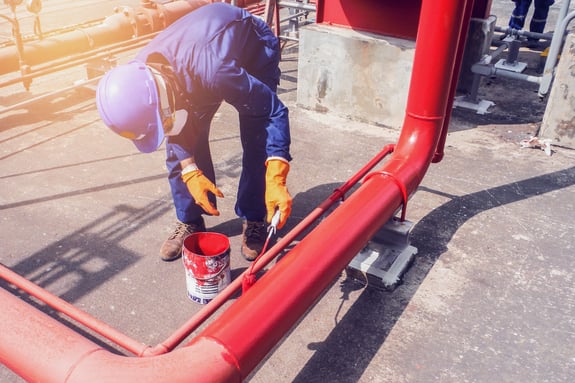
In the safety industry, we often spend a lot of time talking about acute hazards and finding ways to avoid injury, but we often devote very little time thinking about protective measures for chronic hazards.
What are some the the chronic hazards on your job site? Are you sure you and your workers are protected?
Let’s start with a brief explanation of the different types of hazards we need to address:
Acute Work-Related Hazards:
When we call something an acute risk, we mean that it can happen quickly, rapidly, and without warning such as an explosion, a cut, laceration or falling objects. We protect for these risks by wearing hard hats, cut-resistant gloves and by using fall protection systems. We have a plan in place for on-the-spot avoidance of the hazards we anticipate.
Chronic Work-Related Hazards:
We refer to risks that happen over time and slowly as chronic. If you need a visual, think of jobs that require workers to handle chemicals regularly for a long period of time, or be exposed to loud noises or in areas prone to dust or particulates. These are trades that over long periods of time, workers become more susceptible to cancer, hearing loss, respiratory issues, illness or even death because they weren’t wearing the right PPE all along.
Remember Erin Brachovich? It may sound like an extreme example, but it was a true story about a town affected by long term exposure to cancer causing hazardous material. The moral of the style, plan for and avoid the exposure in the first place!
So, why aren’t chronic hazards given as much consideration in safety as the spur of the moment risks? The reason most may be lack of knowledge. There is the same potential for damage or death in both situations, but when you can’t see the effects until it’s too late; it becomes easier to disregard.
“We'll come up with a solution another day.”
Choose the right PPR for the chronic risk:
Hearing Damage:
Just because a noise isn’t deafening, it does not mean it isn’t doing damage. We tend to only think of needing hearing protection when the noise dose is obviously high and hurts our ears. Over time, however, the little cilia in our ears can get damaged from long term exposure, resulting in hearing loss. Protecting our hearing is just one way to plan ahead.
Respiratory Illness:
If your workers are in an environment where the air quality is poor, there is insufficient oxygen or there are harmful dusts, smokes, gases, vapors or sprays there must be a respiratory program in place. If engineering measures are not enough to prevent exposure, workers must participate in a respiratory program with regular fit tests to ensure the right respirator is being used. Long term exposure to contaminants can lead serious health risks or even death.
Hand Protection:
When workers are in contact with any kind of chemical or unknown material, it is vital that the correct hand protection is chosen for the long term risks. Any time we expose a part of our body to a contaminant or irritant, we open ourselves up to the potential for irritation, burns or the unwanted substance to be absorbed through our skin. Workers need to protect their hands with the right chemical gloves for the job.
The best way employers can be sure their employees are safe is to have regular risk assessments and train/retrain employees to know when PPE is required and the correct safety equipment to use. Knowledge is power and the more people know, the better decisions they can make for themselves. Acute and chronic hazards carry the same results, make sure your workers are safe by providing the right PPE for the job.
Safety: It’s Your Life, It’s Our Business








